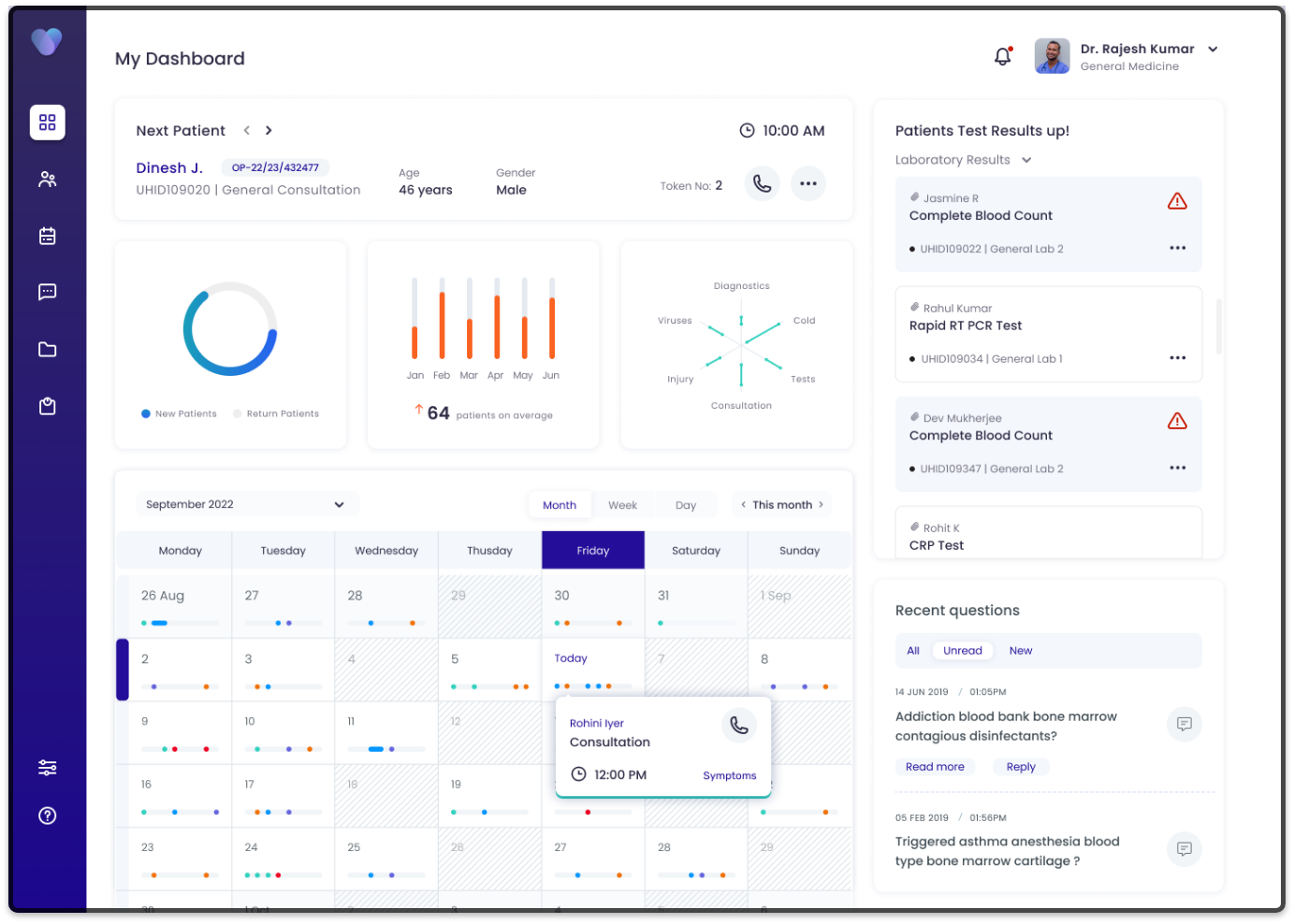HMS
CASE STUDY : Hospital Management System
Introduction:
The purpose of this case study is to analyze the implementation and benefits of a first-class hospital and patient management software. This software aims to streamline and enhance various aspects of hospital operations, including patient admissions, medical records management, appointment scheduling, billing, and overall patient care.
Background:
The first-class hospital chosen for this case study is a large urban medical facility that has recently undergone a digital transformation to improve efficiency and patient outcomes. As part of this transformation, the hospital implemented a state-of-the-art hospital and patient management software solution.
Implementation Process:
The implementation process began with a thorough assessment of the hospital's existing systems and workflows. This allowed the software developers to identify areas where the new software could make the most significant impact. The hospital's IT team collaborated closely with the software developers to ensure a seamless integration of the new system.
Features and Functionality:
The first-class hospital and patient management software offers a wide range of features and functionalities designed to optimize hospital operations. These include:
1. Patient Registration and Admissions:
The software enables quick and efficient patient registration and admissions, reducing paperwork and enhancing the overall patient experience. It streamlines the process by capturing patient information electronically and generating unique patient identifiers.
2. Electronic Medical Records (EMR):
The software incorporates a comprehensive EMR system that allows healthcare providers to access patient medical records securely. This ensures accurate and up-to-date information is readily available, leading to better diagnosis and treatment decisions.
3. Appointment Scheduling:
The software provides a user-friendly interface for scheduling appointments, making it easier for both patients and healthcare professionals. It offers real-time availability of doctors, specialists, and examination rooms, minimizing wait times and improving patient satisfaction.
4. Billing and Insurance Management:
The software automates the billing and insurance management process, reducing errors and administrative burdens. It integrates with insurance systems to facilitate seamless claims processing and payment reconciliation.
5. Prescription and Medication Management:
The software includes a robust prescription and medication management module, enabling doctors to electronically prescribe medications and track patient adherence. This feature enhances patient safety and reduces medication errors.
Benefits and Outcomes:
The implementation of the first-class hospital and patient management software has yielded several significant benefits:
1. Improved Operational Efficiency:
By automating various administrative tasks and streamlining workflows, the software has increased operational efficiency, allowing healthcare staff to focus more on patient care.
2. Enhanced Patient Experience:
The software's user-friendly interface and features such as online appointment scheduling and electronic medical records have significantly improved the overall patient experience. Patients now have easier access to healthcare services, reduced wait times, and personalized care.
3. Cost Savings:
The software's automation capabilities have resulted in cost savings by reducing paperwork, minimizing manual errors, and optimizing resource allocation.
4. Better Data Security and Privacy:
The software incorporates robust security measures to protect patient data, ensuring compliance with healthcare regulations and safeguarding patient privacy.
Conclusion:
The case study highlights the successful implementation and benefits of a first-class hospital and patient management software. The software has revolutionized the hospital's operations, leading to improved efficiency, enhanced patient experience, cost savings, and better data security. This case study serves as a testament to the transformative power of advanced software solutions in healthcare settings.


